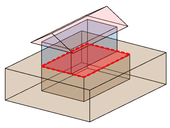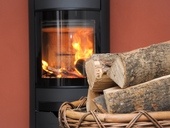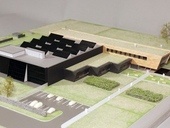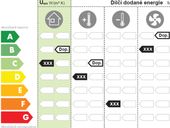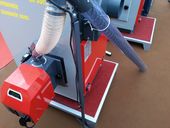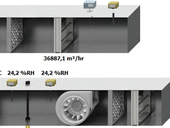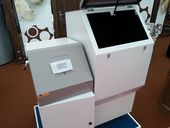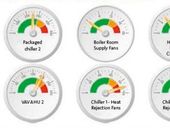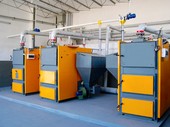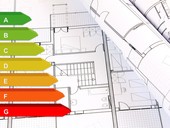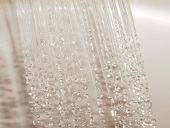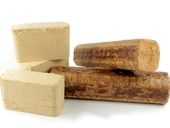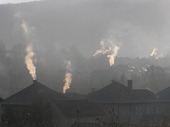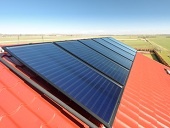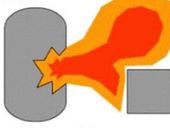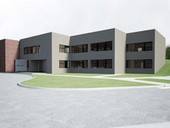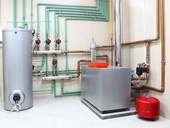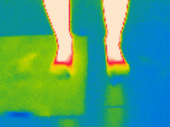Building Act (Act. No. 183/2006 Coll.) in its regulations frequently uses the term of built up area, particularly in the context of built up area of building (hereinafter referred to as “built up area”). Correct determination of built up area is highly significant. Unfortunately, the Building Act did not contain a definition and a method of determining the built up area.
On January 1, 2013 came into effect an extensive amendment of the Building Act (Act No. 350/2012 Coll.). The aim of a legislature was to bring clarity and to provide clear way to determine the built up area. This is defined in § 2 clause (7) of this Act. This definition is not considered unambiguous, though.
The aim of this paper is to analyze the regulations of the Building Act in detail and to find a probable way of correct determination of the built up area. All facts presented in this paper should be taken as the opinions of the authors and should not be considered as a binding interpretation of the law, which is due only to the independent court.
Archiv článků od 28.1.2013 do 20.5.2013
This report is the result of processing all the available statistical sources that relate to the development of small combustion devices supply on the domestic market and its structure. Department of Resources and Energy Statistics acceded to this investigation due to the lack of comprehensive information about the number of devices, and to demand for this type of information.
The University Centre of Energy Efficient Buildings is a newly established interdisciplinary research institute of Czech Technical University focused to energy efficient buildings having the healthy indoor environment that, at the same time, are environmentally friendly. The main objective for the Centre establishment is the development of technologies for the energy demand reduction and the efficient improvement of natural sources concerning new constructions and reconstructions of existing buildings. The objective is to be achieved by the holistic approach, the expert knowledge concentration from the field of architecture, construction, mechanical engineering, information technologies, and hygiene of indoor environment and the top instrument equipment of the Centre.
In relation with the implementation of the revised EU Directive 2010/31/EU on the energy performance of buildings are currently changing some of Czech legal regulations and new methodology for energy performance assessment is introduced . This article focuses on an example rating the standard family house with conventional solution of building envelope and technical systems, using the new evaluation method. For this object will be also an obligation to issue an energy performance certificate as required by the Consolidated Act No. 406/2000 Coll., as amended.
As the market for hot-water boiler becomes more attractive, it appears more and more merchants who offer impossible, therefore operating characteristics and parameters, which even the best solid fuel boiler cannot achieve. Also, according to the Clean Air Act requirements significantly tightened for the placing to market and operation of small boilers.
One of the reasons why building with almost zero energy consumption does not meet the expectation is that it may be too complicated. Another factor is that the project may be too optimistic, and other unforeseen factors, such as office equipment, which actually dominates the energy balance of the building.
This paper describes a general principle of air conditioning unit. Individual components and their functions of AHU are described. Finally, it is a model of AHU and the algorithm that is implemented as a software module in a programming environment. The created module is used for functional analysis and evaluation of energy behavior AHU.
The European Union is committed to reducing energy consumption in the built environment. Since the heating, ventilation and air conditioning (HVAC) represents approximately 11% of the total electricity consumption in Europe, these systems are an important part of the commitment of the EU. In this article, we discuss two specific aspects of HVAC energy efficiency, both are based on that understanding how the commercial buildings work in real life is the first step towards reducing energy consumption.
In connection with the implementation of the revised European Directive 2010/31/EU on the energy performance of buildings, certain legislative provisions such as Decree No. 148/2007, Coll. Replaced by Decree No. 78/2013, Coll. are currently amending. This article is focused on the changes associated with the energy certification of buildings, the "ENB", from the perspective of changes in the evaluation ENB.
The new standard CSN 75 5409 is valid from March 1st 2013. Technical Report on protection against Legionella will apply from May 1st 2013. In case of conflict of energy saving and hygiene prevails hygiene. Size of the hot water tank is chosen according to the requirement of heat pump. Volume of accumulation of solar systems is about 50 l / m 2 of collector area.
This report is the result of processing all the available statistical sources. Report contains just evaluation of statistical data. It cannot cover all the techno-economic issues and relations in the sectors, which go beyond the survey. The report includes data on molded fuels (briquettes and pellets) made from biomass (wood and plant), peat, coal and paper.
The evaluation of the heating period for the calendar year 2010 is useful for producers and consumers, who work on a January-December regime. It also provides data to energy experts for assessing the operational energy consumption of buildings. It also provides figures for the controlling of boilers, according the Decree 276/2007 Coll.
Since the combustion of solid fuels in heating boilers is attended by emissions of pollutants, in individual EU countries are gradually adopted different tightening requirements (emission and efficiency), which the appliance must meet. Requirements are targeted both the producers or importers of the combustion devices and theirs' operators. The aim of this article is to provide an overview of current and oncoming requirements and also show their comparison.
The paper focuses on the conditions of fire and risk connected with dust layer. The next part is about thermal degradation of biomass and heat transfer on dust layer. The next part shows test methods for flame spread. The connection of dust layer and possible secondary explosion. In the article is highlighted connection with space and equipment cleaning due to ČSN EN 60079-10-2.
Ministry of Industry and Trade (MIT) conducted in early 2012 regular statistical survey. On its basis it is possible to refine the estimate of the supply and installation of heat pumps in 2011. The available information indicates that in 2011 for the Czech market was delivered about 7,000 heat pumps with a total capacity of about 86 MW.
Floors are made by construction layers of different materials with unequal functions and characteristics. This formation creates functional unit. According to the material of bearing layer dry and traditional floor systems are distinguished. In dry floors the bearing layer is made by board prefabricated element, e. g. gypsum fiber board, cement bonded particle board or oriented strand board.
Floors must be designed in accordance with legislative and technical requirements. Thermal and technical requirements are of basic significance. Guarantee of required contact temperature decline value presents a significant parameter for ensuring the thermal comfort.
This article compares an influence of three materials of dry floors bearing layer and two materials of wearing layer on the value of contact temperature decline.
zpět na aktuální články
